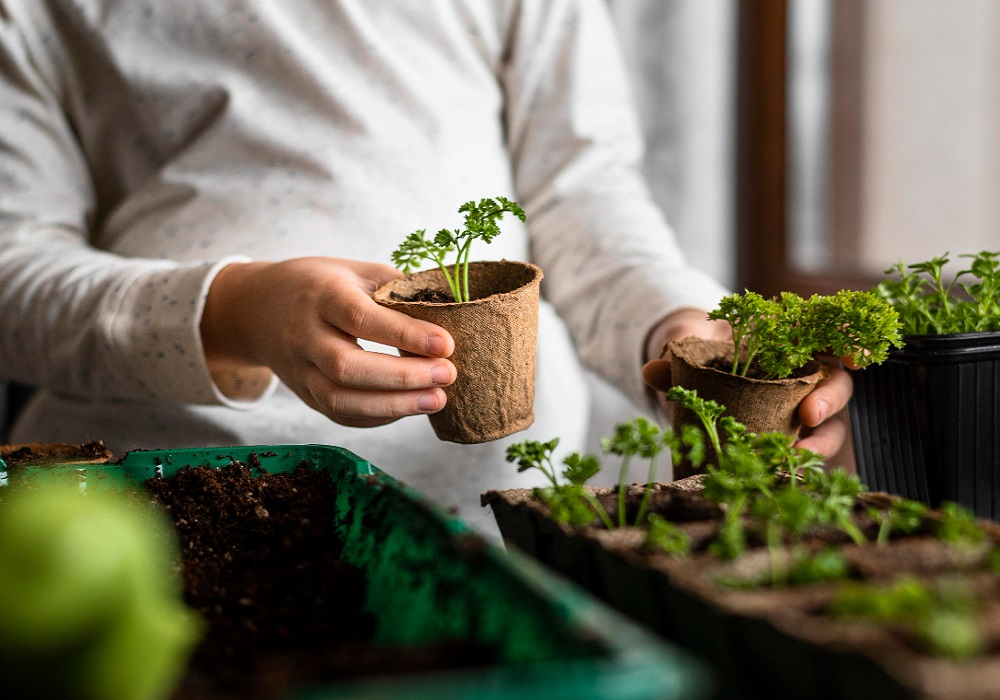Expert Tips for Indoor Gardening in Rajasthan: A Green Guide
Indoor gardening is a delightful and rewarding hobby that allows you to bring a touch of nature into your home. For those living in Rajasthan, a region known for its arid climate, indoor gardening can be particularly beneficial. Not only does it provide a refreshing green space, but it also helps purify the air and can significantly improve your mental well-being. This guide will provide you with expert tips for indoor gardening in Rajasthan, ensuring your indoor plants thrive even in the harshest conditions.
Understanding Rajasthan’s Climate
Before diving into the specifics of indoor gardening, it’s crucial to understand the unique climate of Rajasthan. Known for its hot and dry conditions, Rajasthan experiences extreme temperatures and low humidity levels. These factors can pose challenges for indoor gardening, but with the right strategies, you can create a thriving indoor garden.
Choosing the Right Plants
Selecting the right plants is the first step to successful indoor gardening in Rajasthan. Opt for plants that can withstand dry conditions and require minimal maintenance. Some of the best choices include:
- Aloe Vera: This succulent is not only low-maintenance but also has numerous medicinal benefits.
- Snake Plant: Known for its air-purifying qualities, the snake plant is resilient and thrives in low light.
- Spider Plant: Easy to grow and maintain, spider plants are perfect for beginners.
- Peace Lily: This beautiful plant requires moderate watering and indirect light.
Light Requirements
Light is a critical factor for indoor gardening. In Rajasthan, where sunlight is abundant, you can make the most of natural light:
- Natural Light: Place your plants near windows to ensure they receive adequate sunlight. South-facing windows are ideal.
- Artificial Lighting: If there’s not enough natural light, consider using grow lights. LED grow lights are energy-efficient and provide the necessary spectrum for plant growth.
Watering Tips For Indoor Gardening in Rajasthan
Watering indoor plants can be tricky, especially in a dry climate. Here are some tips to get it right:
- Watering Frequency: Most indoor plants prefer their soil to dry out slightly between watering. Overwatering can lead to root rot.
- Efficient Techniques: Use a watering can with a narrow spout to target the soil directly. Consider bottom watering by placing the pots in a tray of water to allow the soil to soak up moisture.
Soil and Potting Mix
The right soil mix is crucial for the health of your indoor plants. Here’s how to prepare the perfect potting mix:
- Suitable Soil Types: Use well-draining soil to prevent waterlogging. A mix of potting soil, perlite, and sand works well.
- Potting Mix Preparation: Combine equal parts of potting soil, perlite, and sand. This mix ensures good aeration and drainage.
Temperature Control
Maintaining optimal indoor temperatures is essential for plant growth. Rajasthan’s temperatures can be extreme, so consider these tips:
- Optimal Temperatures: Most indoor plants thrive in temperatures between 18-24°C (65-75°F).
- Using Fans and Coolers: During hot summer months, use fans or coolers to regulate the temperature. Avoid placing plants directly in the path of cold air.
Humidity Management
Indoor plants often require higher humidity levels than what is typical in Rajasthan. Here’s how to manage humidity:
- Ideal Humidity Levels: Aim for humidity levels between 40-60%.
- Increasing Humidity: Use a humidifier, place a tray of water near the plants, or group plants together to create a micro-environment.
Fertilizing Your Indoor Garden
Fertilizing provides essential nutrients that may not be present in the soil. Follow these guidelines:
- Choosing the Right Fertilizers: Use balanced, water-soluble fertilizers. Organic options like compost tea are also beneficial.
- Application Frequency: Fertilize every 4-6 weeks during the growing season (spring and summer). Reduce frequency during fall and winter.
Pest Control
Indoor plants can attract pests, but you can keep them at bay with natural methods:
- Common Pests: Look out for aphids, spider mites, and mealybugs.
- Natural Pest Control: Use neem oil, insecticidal soap, or a mixture of water and dish soap to treat infestations.
Pruning and Maintenance
Regular pruning and maintenance keep your plants healthy and encourage growth:
- Pruning Practices: Remove dead or yellowing leaves and trim back overgrown branches.
- General Maintenance: Dust the leaves regularly and check for signs of pests or disease.
Container Selection
Choosing the right containers is crucial for indoor gardening success:
- Best Containers: Use pots with drainage holes to prevent waterlogging. Terracotta pots are ideal as they allow air and moisture to pass through.
- DIY Container Ideas: Repurpose household items like mason jars, teacups, or wooden boxes as plant containers.
Decorative Tips
Enhance the aesthetic appeal of your indoor garden with these decorative tips:
- Aesthetic Ideas: Use decorative pots, hanging planters, and plant stands to create visual interest.
- Integrating Plants with Home Decor: Place plants strategically in your living space, such as on shelves, windowsills, or in corners to brighten up the room.
Health Benefits of Indoor Gardening
Indoor gardening offers numerous health benefits:
- Physical and Mental Health: Caring for plants can reduce stress, boost mood, and improve overall well-being.
- Air Purification: Plants like the peace lily and snake plant can improve indoor air quality by removing toxins.
Conclusion
Indoor gardening in Rajasthan may come with its challenges, but with the right knowledge and techniques, you can create a thriving green space in your home. From selecting the right plants to managing light, water, and humidity, these expert tips for indoor gardening in Rajasthan will help you cultivate a beautiful and healthy indoor garden. So, get started and bring a touch of nature into your home!
Also Read – Blossom on Your Balcony: Terrace Vegetable Garden Ideas in India Unveiled






